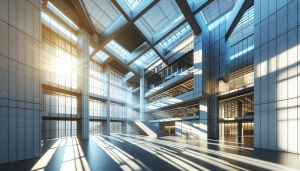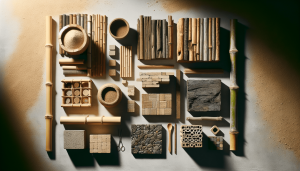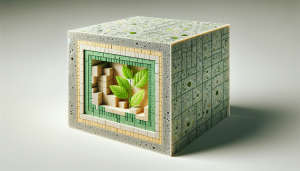Welcome to our guide, “Designing an Eco-Friendly Home for Sustainable Living.” Together, we’ll explore practical ways to create a home that not only reduces our carbon footprint but also enhances our quality of life. By focusing on energy efficiency, sustainable materials, and thoughtful architectural designs, we can transform our living spaces into eco-friendly havens. Our journey will highlight key strategies and inspiring ideas, empowering all of us to embrace sustainable living with enthusiasm and creativity. How can we design an eco-friendly home?
Designing an eco-friendly home for sustainable living is an exciting journey that not only benefits us but also contributes significantly to the health of our planet. By adopting sustainable practices in our home designs, we can reduce our carbon footprint, lower our energy bills, and create a healthier living environment. So, let’s roll up our sleeves and dive into the hows and whys of creating our own eco-friendly oasis.
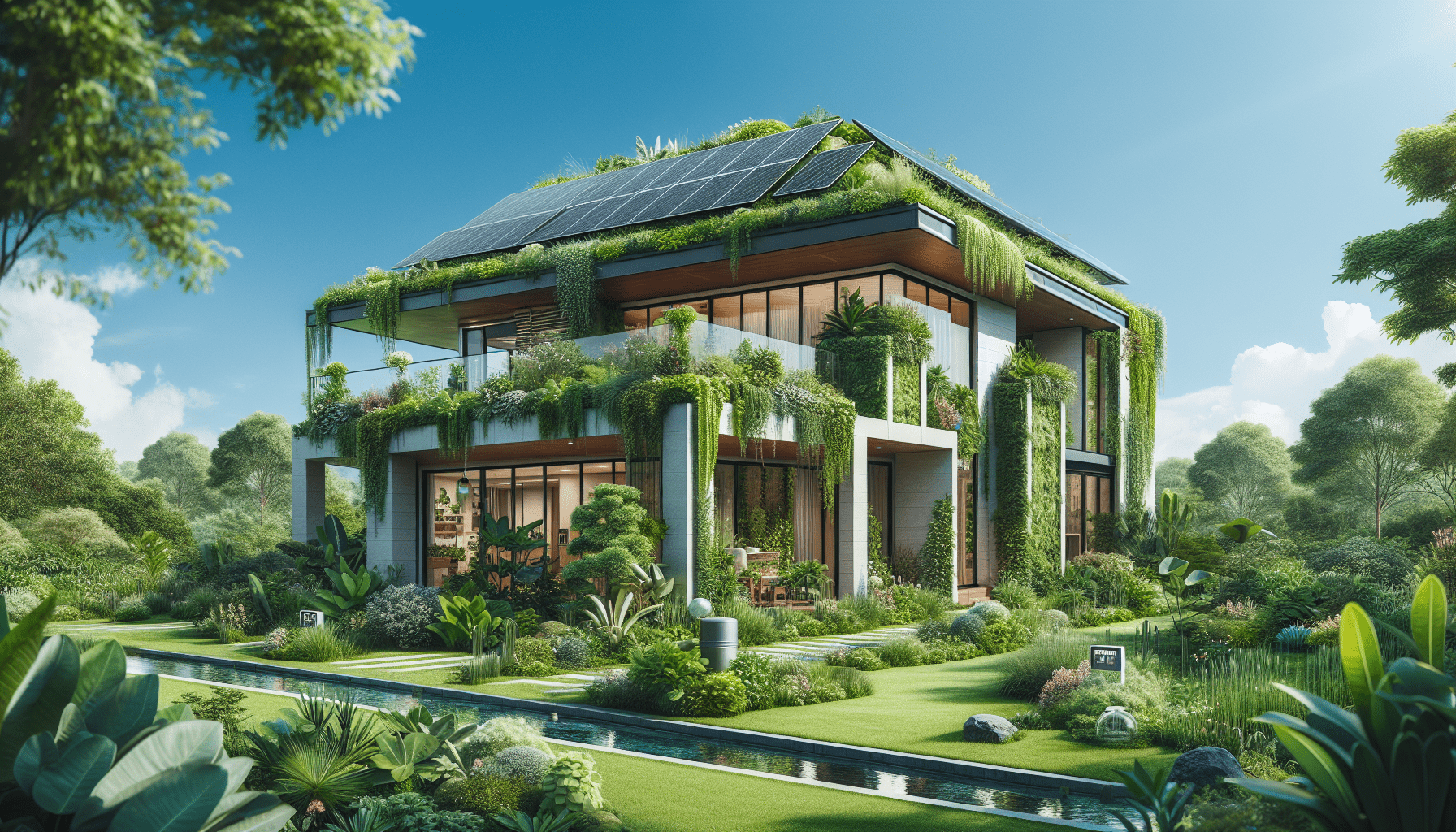
Understanding Sustainable Living
Before we get into the nitty-gritty of designing an eco-friendly home, let’s first understand what sustainable living truly entails. Sustainable living encourages us to reduce our demand on natural resources, minimize our waste, and foster a more balanced relationship with the environment.
The Principles of Sustainable Living
Sustainable living revolves around three main principles: Reduce, Reuse, and Recycle.
- Reduce: Lowering our consumption of natural resources and energy.
- Reuse: Finding new ways to use old items rather than discarding them.
- Recycle: Processing used materials into new, usable products.
Why Sustainable Living Matters
Adopting a sustainable lifestyle helps us conserve environmental resources, reduce pollution, and promote a healthier society. Making these changes in our home design is a critical step in leaving a positive impact on our world.
Key Elements of Eco-Friendly Home Design
When it comes to designing an eco-friendly home, there are several key elements that we should consider. These elements ensure that our homes are energy-efficient, resource-conserving, and have a minimal impact on the environment.
Location and Orientation
Choosing the right location and orientation for our home can significantly influence its eco-friendliness. Here’s how we can make thoughtful decisions:
- Sunlight and Ventilation: Place our homes in a way that maximizes natural sunlight and ventilation, reducing the need for artificial lighting and cooling systems.
- Landscape Integration: Preserve natural landscapes and utilize native plants that require less water and maintenance.
Sustainable Building Materials
Using sustainable building materials is crucial. These materials are often renewable, recyclable, and have a lower environmental impact.
| Material | Description | Benefits |
|---|---|---|
| Bamboo | A fast-growing renewable resource | Strong, durable, and versatile |
| Reclaimed Wood | Recycled wood from old buildings | Reduces deforestation |
| Recycled Metal | Recycled steel, aluminum, and copper | Energy-efficient production |
| Insulated Concrete Forms (ICF) | Foam forms filled with concrete | Energy-efficient and durable |
| Solar Tiles | Tiles that integrate solar technology | Generate renewable energy |
Energy Efficiency
Energy efficiency is a cornerstone of eco-friendly design. By making our homes more energy-efficient, we can significantly reduce our carbon footprint.
- Insulation: Proper insulation keeps our homes warm in the winter and cool in the summer, reducing the need for heating and cooling systems.
- Energy-efficient Windows: Double or triple-glazed windows help retain heat in the winter and keep our homes cool in the summer.
- Appliances: Opt for energy-efficient appliances that use less electricity and water.
Water Conservation
Water is a precious resource, and conserving water should be a priority in our eco-friendly homes.
- Low-flow Fixtures: Install low-flow faucets, showerheads, and toilets to reduce water usage.
- Rainwater Harvesting: Use systems to collect and store rainwater for landscaping and non-potable uses.
- Greywater Systems: Reuse water from sinks, showers, and washing machines for irrigation.
Renewable Energy Sources
Harnessing renewable energy sources is a fantastic way to make our homes more sustainable.
- Solar Power: Install solar panels to generate clean, renewable energy for our homes.
- Wind Power: If feasible, small wind turbines can provide another source of renewable energy.
- Geothermal Energy: Use the earth’s natural heat for heating and cooling our homes.
Designing for Sustainability
By integrating sustainable principles into our home design from the ground up, we can create spaces that are both functional and environmentally friendly.
Passive Solar Design
Passive solar design strategically uses the sun’s energy to heat and cool our homes.
- Orientation: Facing our windows southward to maximize sunlight exposure.
- Thermal Mass: Using materials like concrete or brick that absorb and store heat.
- Insulation: Ensuring our home is well-insulated to retain heat.
Efficient Space Planning
Thoughtful space planning can improve energy efficiency and reduce waste.
- Multifunctional Spaces: Design rooms that serve multiple purposes to minimize the need for additional space and resources.
- Open Floor Plans: Promote airflow and natural light, reducing the need for artificial lighting and cooling.
Green Roofs and Walls
Incorporating green roofs and walls can offer several environmental benefits.
- Green Roofs: Provide insulation, reduce stormwater runoff, and create habitats for wildlife.
- Green Walls: Improve air quality, offer natural insulation, and enhance aesthetics.
Sustainable Landscaping
Landscaping is a big part of our home’s eco-friendliness.
- Native Plants: Choose plants that are native to our region as they require less water and maintenance.
- Permeable Surfaces: Use permeable materials for driveways and paths to reduce stormwater runoff.
- Composting: Compost kitchen waste to create nutrient-rich soil for our gardens.
Smart Home Technology
Integrating smart home technology can further enhance our home’s energy efficiency.
- Smart Thermostats: Adjust heating and cooling systems automatically based on our schedule.
- Lighting Controls: Use sensors and timers to control lighting usage.
- Energy Monitoring Systems: Track energy usage and identify opportunities for conservation.
Indoor Environmental Quality
Creating a healthy indoor environment is just as important as energy efficiency and sustainability. Our homes should be havens of health and well-being.
Air Quality
Indoor air quality can significantly impact our health. Here are a few ways to improve it:
- Ventilation: Ensure adequate ventilation to remove pollutants and bring in fresh air.
- Low-VOC Materials: Choose paints, finishes, and furnishings with low volatile organic compounds (VOCs) to reduce indoor air pollution.
- Houseplants: Plants can purify the air by removing toxins and adding oxygen.
Natural Lighting
Maximizing natural light creates a more pleasant living environment and reduces the need for artificial lighting.
- Windows and Skylights: Strategically place windows and skylights to maximize sunlight.
- Light Shelves: Use light shelves to direct sunlight deeper into rooms.
Temperature and Humidity Control
Maintaining a comfortable temperature and humidity level is essential for our health.
- HVAC Systems: Install energy-efficient heating, ventilation, and air conditioning systems.
- Dehumidifiers: Use dehumidifiers in humid climates to prevent mold growth.
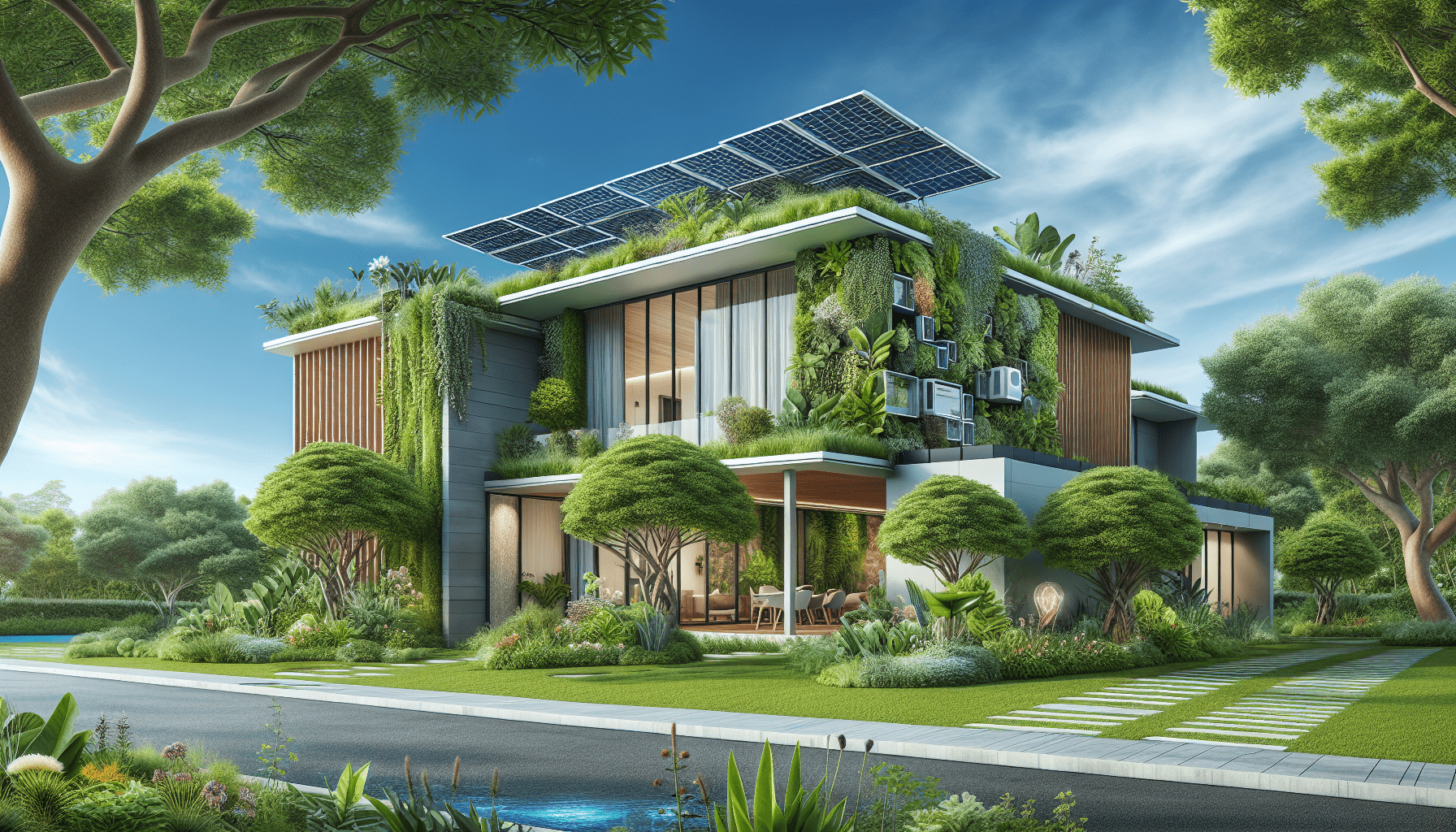
Maintenance and Lifestyle
Designing an eco-friendly home is just the start. Maintaining and adopting a sustainable lifestyle is equally important.
Regular Maintenance
Regular home maintenance ensures that our systems function efficiently and last longer.
- HVAC Maintenance: Regularly service heating and cooling systems to keep them running efficiently.
- Plumbing Inspections: Check for leaks and fix them promptly to conserve water.
- Renewable Energy Systems: Maintain solar panels and other renewable energy systems to ensure optimal performance.
Sustainable Living Practices
Adopting sustainable living practices can further reduce our environmental impact.
- Conserve Energy: Turn off lights and appliances when not in use.
- Reduce Waste: Minimize waste by recycling and composting.
- Water Conservation: Be mindful of water use in our daily activities.
Community Involvement
Engaging with our community can amplify our efforts and inspire others to adopt sustainable practices.
- Local Initiatives: Participate in or support local sustainability initiatives.
- Education: Share knowledge and resources to educate others about sustainable living.
Costs and Benefits
It’s important to consider the costs and benefits of designing an eco-friendly home. While there may be initial investments, the long-term gains can be substantial.
Initial Costs
Some eco-friendly features may require a higher upfront investment. Here are a few examples:
| Feature | Approximate Cost |
|---|---|
| Solar Panels | $10,000 – $30,000 |
| Energy-efficient Windows | $300 – $1,000 per window |
| Insulation | $1,500 – $5,000 |
| Low-flow Fixtures | $50 – $300 per fixture |
Long-term Savings
Investing in eco-friendly features can lead to significant savings over time.
- Energy Bills: Reduced energy bills from efficient systems and renewable energy.
- Water Bills: Lower water bills from conservation measures.
- Maintenance: Durable materials often require less maintenance and replacement.
Environmental Benefits
The environmental benefits of an eco-friendly home are profound.
- Reduced Carbon Footprint: Lower energy consumption and carbon emissions.
- Resource Conservation: Responsible use of materials and water resources.
- Waste Reduction: Minimized waste through recycling and composting.
The Future of Sustainable Home Design
The field of sustainable home design is constantly evolving with new technologies and materials. Staying informed about these advancements can inspire us to make continuous improvements.
Emerging Technologies
Several emerging technologies hold great potential for sustainable living.
- Smart Grids: Improve energy distribution and reliability.
- Biodegradable Materials: Reduce waste and environmental impact.
- Enhanced Solar Technology: More efficient and cost-effective solar solutions.
Policy and Incentives
Government policies and incentives can encourage sustainable home design.
- Tax Credits: For installing renewable energy systems.
- Rebates: For energy-efficient appliances and home improvements.
- Building Codes: Stricter codes to promote energy efficiency and sustainability.
Taking the First Step
Designing an eco-friendly home for sustainable living is a rewarding endeavor that benefits us and future generations. By understanding the principles, key elements, and practices of sustainable living, we can create homes that are efficient, healthy, and harmonious with the environment. Let’s take the first step today and commit to building a greener, more sustainable future.
Our journey toward sustainable living starts here. The choices we make today will shape the world we leave for tomorrow. Here’s to a future filled with eco-friendly homes and sustainable bliss!

